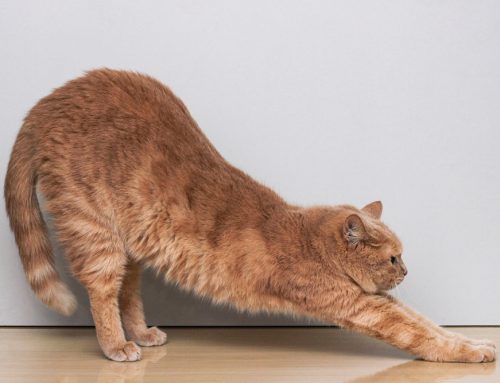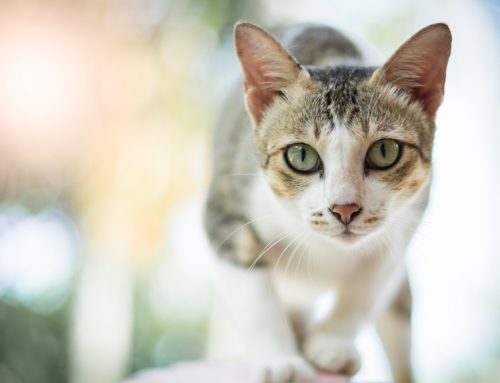Indoor cats live longer and healthier lives, but they need enrichment to keep them entertained and healthy. Without the appropriate environmental stimulation, cats are at risk for certain health and behavioral issues. Our Billings Animal Family Hospital team wants to help by offering do’s and don’ts that will help keep your indoor cat happy.
DO engage your cat’s hunting instincts
Cats instinctively stalk and chase prey, and hunting is a great way for them to exercise and expend energy. Use wand-style toys, toys on strings, and laser pointers to engage your cat in hunting behavior—toys that mimic bird or mouse movements are especially irresistible. Try out several toys to find your cat’s preference, and switch out their toys every few days to prevent boredom.
DON’T neglect your cat’s litter box
Cats are particular about their litter box, and will become stressed if they are displeased with their box setup. Tips to ensure your cat doesn’t find fault with their litter box include:
- Finding a suitable location — Place your cat’s litter box in a quiet area where your cat won’t be disturbed by excessive foot traffic or loud noises.
- Providing enough litter boxes — You should provide at least one litter box for every cat in your home, plus one extra.
- Cleaning the litter box regularly — Scoop your cat’s litter box at least twice a day, and change out the box and replace the litter at least once a week.
- Using litter appropriately — Most cats prefer unscented clumping litter that is two to three inches deep.
- Ensuring the litter box is large enough — Your cat’s litter box should be at least as long as your cat from their nose to the tip of their extended tail, and as wide as your cat is long without their tail extended.
DO ensure your cat has somewhere to scratch
Cats scratch for numerous reasons, including marking their territory, stretching, and removing dead nail tissue. If you don’t provide acceptable scratching places, they will use your furniture and carpet. To provide appropriate cat scratchers:
- Provide options — Cat scratchers come in different sizes, orientations, and surfaces. Provide options for your cat to ensure they find their preferred scratching method.
- Stabilize the scratcher — Ensure the cat scratcher is stable and doesn’t move when your cat scratches. A wobbly scratcher may scare your cat, and they will avoid the object.
- Place scratchers throughout your home — Place scratchers in multiple rooms so your cat can conveniently scratch wherever they are in your house.
- Sprinkle catnip — A little catnip sprinkled on the scratcher will help entice your cat.
DON’T let your cat get bored at mealtimes
Cats in the wild spend a large amount of time hunting their food. When you present a food bowl to your cat, this hunting instinct is left unsatisfied. You can make mealtimes more entertaining for your cat by:
- Using a food puzzle toy — You can use a commercially available or hand-made food puzzle toy to feed your cat.
- Hiding your cat’s food — You can hide your cat’s food in several locations throughout your home to make them hunt for their meal. Start with relatively easy hiding places, and gradually increase the difficulty once your cat gets the hang of the game.
DO ensure your cat has a lofty view
Cats are prey animals as well as predators, and they feel safer when they can view their environment from an elevated vantage point. Ensure your cat has vertical space by:
- Purchasing a cat tower — You can purchase or make your own cat tower, so your cat can rest on multiple levels.
- Setting up shelves — You can install shelving around your living area, so your cat can navigate the room in an elevated position.
- Cleaning off shelves — Remove decorative objects from your shelves, so your cat can view their surroundings without endangering your belongings.
DON’T assume your cat can’t be trained
Most people don’t think about training their cat, but teaching your cat a trick is a great mental workout, and strengthens your bond. To train your cat:
- Find a good time — Cats like their routine, and you will have to find a good time to incorporate a training session, preferably at dawn or dusk, when they are most active.
- Keep sessions brief — Cats have a short attention span, and will get bored if training sessions are too long. Ten-minute sessions will allow for progress, without causing frustration.
- Use positive reinforcement — Treat your cat frequently to keep them motivated.
DO provide a window seat for your cat

Cats can occupy themselves for hours looking out the window, and especially enjoy watching birds and small mammals. Ensure they have a comfortable place to rest while they watch their favorite show. In addition, you can set up a bird feeder or bird bath outside the window to attract more wildlife.
A happy home environment can ensure your indoor cat lives a long, healthy life. However, if your indoor cat is exhibiting concerning behavioral issues, contact our Billings Animal Family Hospital, so we can determine if they have an underlying health condition.








Leave A Comment